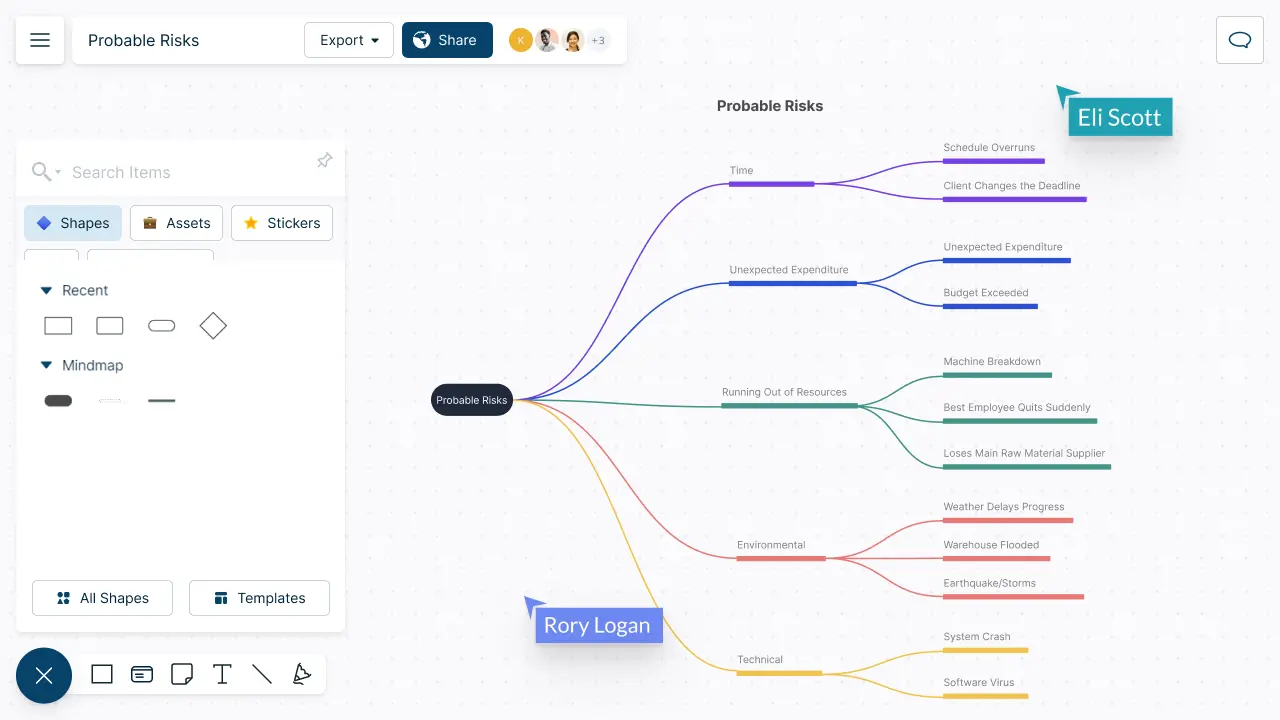Blitz News Digest
Stay updated with the latest trends and insights.
Mind Mapping Mayhem: Organize Your Thoughts in Style
Unleash your creativity with stylish mind mapping techniques! Transform chaotic thoughts into organized ideas effortlessly. Dive in!
Unlocking Creativity: 5 Benefits of Mind Mapping for Effective Thought Organization
Mind mapping is a powerful technique that enhances creativity and improves the way we organize our thoughts. By visually representing ideas, mind mapping allows individuals to see the connections between concepts, which can lead to more innovative solutions and insights. One of the main benefits is that it fosters a free flow of ideas, encouraging participants to think outside the box without the constraints of linear thinking. This approach not only enhances individual creativity but also promotes *collaboration* among team members, making it an ideal tool for brainstorming sessions.
In addition to promoting innovation, mind mapping provides a structured way to organize information. This method involves creating a central idea and branching out into related topics, which helps in breaking down complex information into digestible parts. Here are five key benefits of using mind mapping for effective thought organization:
- Improved Recall: Visual aids enhance memory retention.
- Increased Productivity: Streamlining thought processes boosts efficiency.
- Greater Clarity: Simplifies complex ideas into understandable sections.
- Enhanced Focus: Keeps attention directed towards the main idea.
- Encouraged Collaboration: Supports a shared understanding among team members.

How to Create a Mind Map: A Step-by-Step Guide for Beginners
Creating a mind map is an effective way to organize your thoughts and boost creativity. To get started, gather your materials: a blank sheet of paper or digital mind mapping software, colorful pens or markers, and a quiet space. Begin by identifying the central idea you want to explore and write it in the center of your page. From this central idea, draw branches that represent related subtopics. As you expand the branches, include keywords or phrases, ensuring that the main concepts are visually distinct. This method not only helps in idea generation but also makes complex information easier to digest.
Once you have your initial structure, it’s time to elaborate further. Utilize colors, symbols, and images to enhance the visual appeal and aid memory retention. You can further refine your map by connecting ideas with lines and arrows, showcasing the relationships between different concepts. To summarize, here are the steps in creating a mind map:
- Identify your central idea.
- Draw branches for subtopics.
- Add keywords and phrases.
- Incorporate colors and symbols.
- Connect related concepts.
Mind Mapping vs. Traditional Note-Taking: Which Method Works Best for You?
When it comes to organizing thoughts and information, mind mapping and traditional note-taking each offer unique benefits. Mind mapping is a visual tool that allows you to create a structured diagram of your ideas, promoting creative thinking and enhancing memory retention. By representing information in a radial format, you can see connections and relationships between concepts more clearly than in linear notes. This could be especially beneficial for those who feel stifled by the conventional format of traditional note-taking, which tends to be more restrictive and less engaging.
On the other hand, traditional note-taking—whether through writing by hand or typing—offers a straightforward way to record information that is straightforward and easy to revisit. This method is often favored in academic settings, where sequential information and detail-oriented notes are crucial for effective studying. Ultimately, the choice between mind mapping and traditional note-taking depends on your personal learning style, the type of information you are dealing with, and your specific goals. Consider experimenting with both methods to discover which one best enhances your understanding and retention of information.